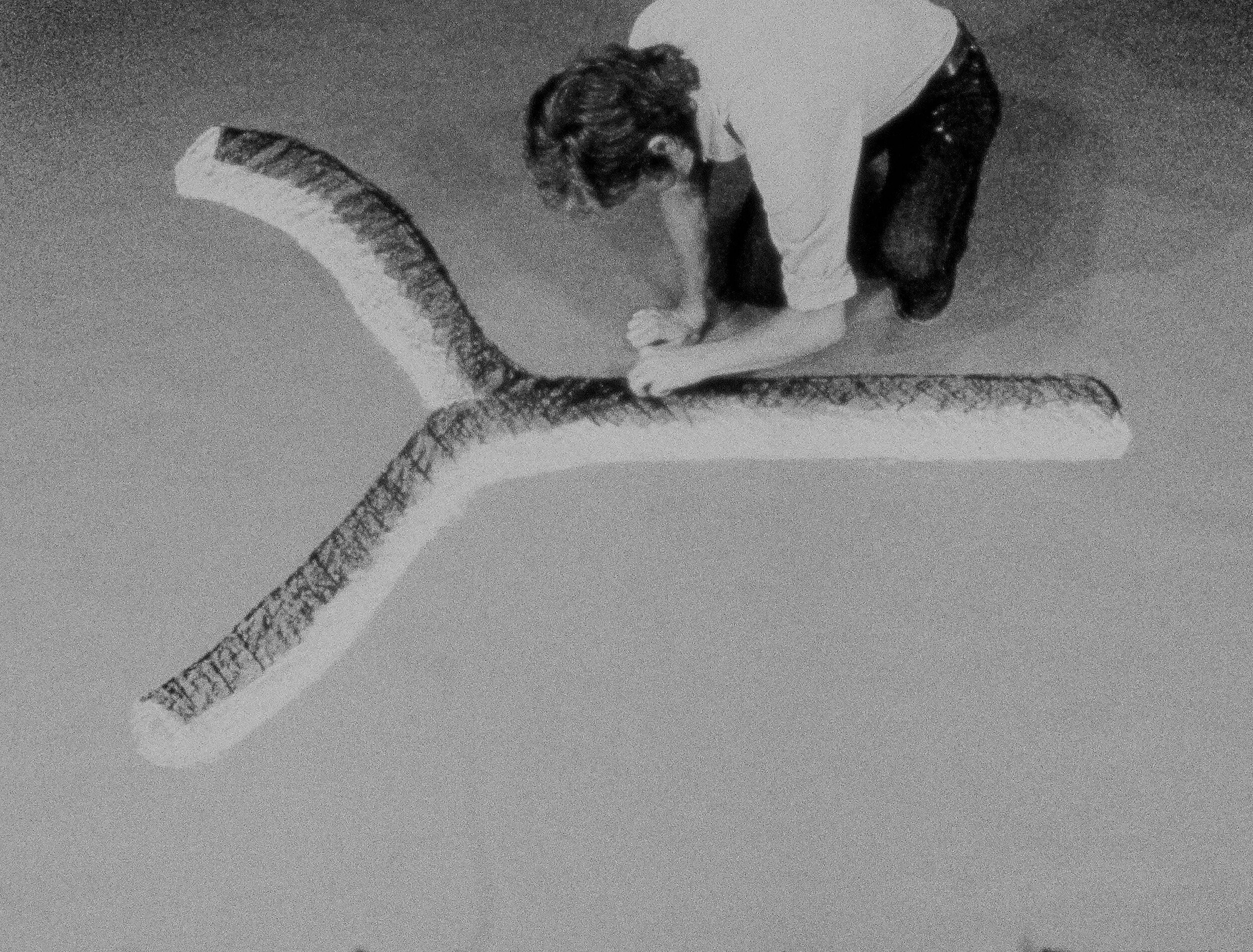Black and White Drawing 1975-6, 12 min. b&w, 16mm, silent
Black and White Drawing is about the two dimensionality of the film frame and the illusion of three dimensionality created by drawing. A sheet of gray paper is placed on the floor front of the camera. The film switches to negative: the paper is now darker, a different shade of gray. Haxton sketches in with "black" chalk black areas in wavy lines and goes over and over them, making them more solid. He leaves the frame. There is a cut to positive image: the chalk draws along the first areas, uniting them into a single shape that looks somewhat like a twig or a tuning fork with one short leg which appears at first to be equal in length to the other. Haxton uses the conventions of shading as "shadow" to make the white areas look like volumetric or perspectival extensions of the black: the drawing seems very object like. He changes the orientation of the paper by rotating it in the frame so that the "fork" is on the right and the short leg is on the top rather than in the bottom: this seems to distort the perspective, making the disparity between lengths more apparent. Using both black and white chalk, he extends the short leg so that it is equal to the longer one, making the drawing more illusionistic than before, then steps out of the frame, heightening the illusionism. The drawing seems to be floating in space. At the end of the film, the sheet of paper is pulled away, revealing the flat wood floor.
